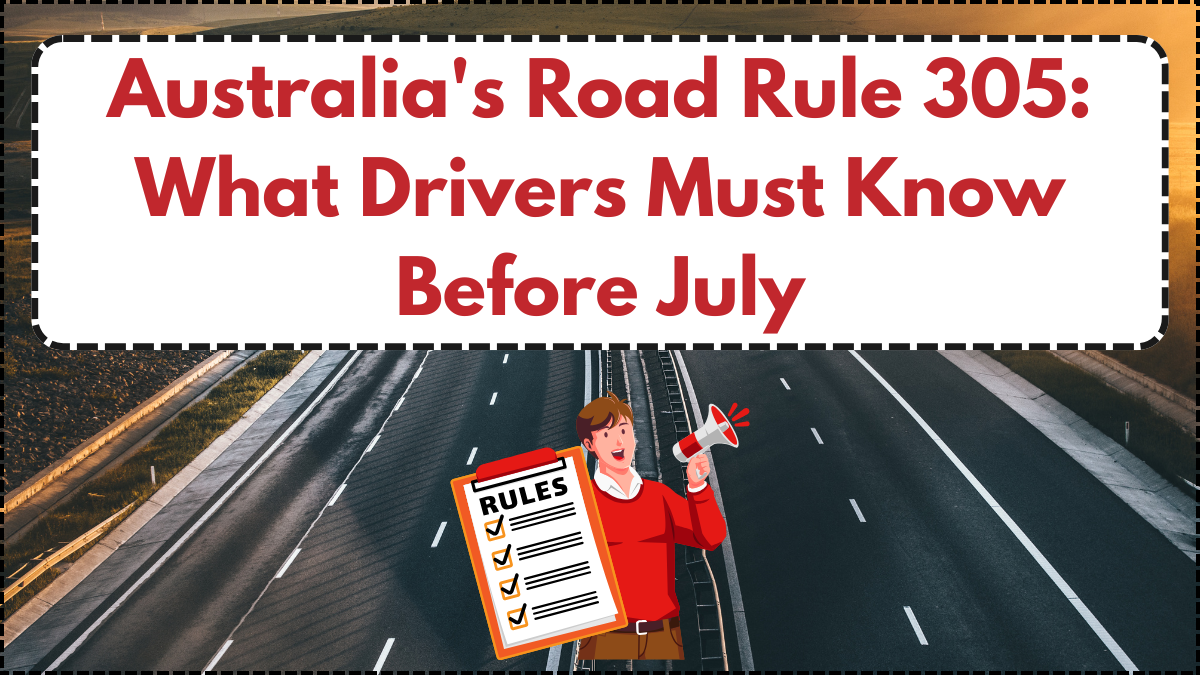As we approach the midpoint of 2025, there’s growing attention on a lesser-known but crucial regulation: road rule 305 Australia. This rule, often overlooked by everyday drivers, holds significant implications for how motorists interact with road authorities—especially during temporary and emergency traffic control situations. Set to be a central compliance focus starting July 1, 2025, drivers across Australia need to grasp what this rule entails, who enforces it, and how non-compliance could lead to penalties.

Understanding the Core of Road Rule 305
At its core, Road Rule 305 grants legal authority to follow directions from officials who aren’t police officers. This includes transport officers, road workers, emergency service crews, and authorised contractors. If they’re managing traffic—say, during a road closure, major event, or accident response—their instructions carry the same legal weight as standard road signs or police commands.
The rule exists to ensure safety and streamline control during unplanned or transitional situations. Imagine a bushfire evacuation where road access changes by the minute, or a large-scale event causing rerouted lanes—305 enables quick, lawful direction.
Real-World Applications of Road Rule 305 in 2025
In June 2025, several incidents have already highlighted the growing enforcement of this rule. In Brisbane’s north, flood-related detours saw traffic controllers issue temporary instructions that some drivers ignored—leading to fines and delayed emergency response. Similarly, Sydney’s WestConnex construction zones now use contractors to direct traffic, with full backing from Road Rule 305.
Here’s a breakdown of who can direct traffic under this rule:
| Authorised Personnel | Common Situations |
|---|---|
| Road Construction Crews | Detours, lane closures |
| Emergency Services | Accidents, disasters |
| Event Staff | Parades, stadium events |
| Utility Workers | Power or water repairs |
| Transport Officers | Congestion management |
Failure to comply can result in on-the-spot fines, demerit points, or court appearances. As more infrastructure upgrades roll out across Australia in the next 12 months, drivers must be ready to respond immediately and respectfully to directions—even if they differ from permanent signage.
Why July 2025 Marks a Turning Point
Although Road Rule 305 isn’t new, July 2025 will mark a stricter national push for awareness and enforcement. Transport departments in New South Wales, Victoria, and Queensland are ramping up public messaging. Driver education materials are being updated, and digital road signage will include alerts about 305-related directives.
Drivers can expect:
- More roadside compliance checks
- Increased penalties for non-compliance
- Updated learner and license renewal test questions
This regulatory shift aims to protect the growing number of workers on the road and to support real-time traffic management as Australia modernises its infrastructure network.
How to Stay Compliant and Safe
To stay within the law and avoid unexpected fines:
- Treat all directions from authorised personnel as mandatory
- Don’t challenge or ignore temporary instructions
- Slow down in active work or emergency zones
- Check your state’s transport website for local guidance
For added safety, authorities recommend always keeping your radio tuned to traffic updates and using real-time apps like Live Traffic NSW or VicRoads.
The Bigger Picture: Respecting Road Workers and Emergency Crews
Beyond compliance, Road Rule 305 reflects a broader principle: safety for all road users, especially those on foot managing chaos or danger. Ignoring a traffic controller during a crisis doesn’t just break the law—it puts lives at risk.
With winter weather and school holidays increasing traffic unpredictability, June is a critical time for all drivers to get familiar with how Road Rule 305 Australia operates.
FAQs
Who exactly can give directions under Road Rule 305?
Any person officially authorised by the state, such as emergency service workers, road workers, or traffic controllers, can legally instruct you during active operations.
What if their instructions contradict permanent road signs?
Temporary directions take precedence. Always follow the most immediate, live instruction—even if it seems contradictory.
Will I get fined for accidentally ignoring a direction?
Yes. Intent doesn’t change the outcome. If you miss or disregard an instruction, penalties may still apply.
How can I verify someone is authorised?
Authorised personnel usually wear hi-vis uniforms and carry identification. In any regulated area, their authority is assumed.
Is Road Rule 305 the same across all states?
While the core rule applies nationwide, penalties and specific applications can vary slightly by state. Check your local transport authority.
For More Information Click Here



